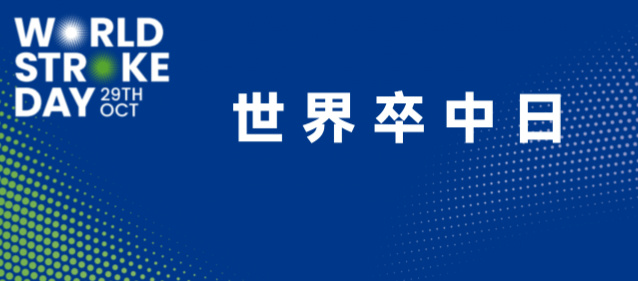有些DLBCL患者免疫化疗后或许不必接受放疗
2017年6月2-6日,一年一度的美国临床肿瘤学会(American Society of Clinical Oncology,ASCO)年会将在芝加哥举办。当地时间6月3日下午的血液系统(非霍奇金淋巴瘤)肿瘤口头报告专场上,一项摘要号为7506的III OPTIMAL>60试验表明,对于PET扫描阴性的弥漫性大B细胞淋巴瘤(DLBCL)老年患者而言,免疫化疗后可不必行辅助放疗。该项分析包含了这项试验中187例有肿块的患者。
2017年6月2-6日,一年一度的美国临床肿瘤学会(American Society of Clinical Oncology,ASCO)年会将在芝加哥举办。当地时间6月3日下午的血液系统(非霍奇金淋巴瘤)肿瘤口头报告专场上,一项摘要号为7506的III OPTIMAL>60试验表明,对于PET扫描阴性的弥漫性大B细胞淋巴瘤(DLBCL)老年患者而言,免疫化疗后可不必行辅助放疗。该项分析包含了这项试验中187例有肿块的患者。
来自德国洪堡萨尔的研究带头人Michael Pfreundschuh博士表示,这一研究的期中分析证实了,基于PET的放射疗法对肿块型患者是安全的,这一方案使放疗率下降42%,并且未影响这些患者的预后。
PET阳性的肿块型DLBCL免疫化疗后进行放疗有可能改善预后不良。
放射治疗可以改善老年肿块型DLBCL的整体预后[Lancet Oncol 2008; 9: 105-116; J Clin Oncol2014; 32:112-1118],但研究小组试图明确PET阴性的患者在利妥昔单抗联合环磷酰胺、阿霉素、长春新碱、强的松(R-CHOP)的免疫化疗后是否可以安全地免于放疗。
研究小组纳入了年龄为61~80岁的CD20阳性DLBCL患者,随机给予6个周期的CHOP或CHLIP(脂质体长春新碱代替传统长春新碱,2-mg/m2)加8个周期的利妥昔单抗(375mg/m2,每2周或每12天(第 -4,-1,1,4,14,28,42,56,91,126,175, 238)。PET阳性的肿块型患者在化疗后接受39.6-Gy的放射治疗。
研究小组通过RICOVER-60研究的历史对照进行了分析。Pfreundschuh注意到,患者的中位年龄、结外受累、ECOG评分和其他变量在RICOVER-60和OPTIMAL>60两项研究中差异显著。
在OPTIMAL>60研究中,不到半数(48%)的PET阳性患者接受了放疗,其他患者未接受放疗的原因包括进展期疾病(44%)、毒性和“医疗因素”(50%)以及其他因素(6%)。
整体上,OPTIMAL>60研究中有33%的患者接受了放疗,相比RICOVER-60研究略少(57%)——放疗率相对下降42%。然而,两项研究的无进展生存率(PFS)和总生存率(OS)却无显著差异,OPTIMAL>60为79%和88%,RICOVER-60为75%和78%。
摘要原文
Radiotherapy to bulky disease PET-negative after immunochemotherapy in elderly DLBCL patients: Results of a planned interim analysis of the first 187 patients with bulky disease treated in the OPTIMAL>60 study of the DSHNHL.
Background:
RT to bulky sites improves outcome of elderly DLBCL patients [Lancet Oncol 2008; 9: 105-116; J Clin Oncol 2014; 32:112-1118]. Whether RT can be spared in PET-negative pts. after R-CHOP was prospectively addressed in OPTIMAL >60.
Methods:
61 to 80 y-old pts. were randomized in a 2x2 factorial design to 6xCHOP-14 or 6xCHLIP-14 (liposomal instead of conventional vincristine) plus 8 x rituximab 375 mg/m2(R) q 2 wks. or 12xR (days -4,-1,1,4,14,28,42,56,91,126,175, 238). Pts. with bulk (>=7.5 cm) PET-positive after 6 cycles chemotherapy were assigned to RT (39.6 Gy), while PET-negative bulks were observed.
Results:
187/505 (37%) had bulky disease and were compared to 117/306 (38%) RICOVER-60 pts. (38%) who had received 6xCHOP-14+8R. OPTIMAL>60 pts. were older (70 vs. 68 years) and had more IPI=3 (33% vs. 29%) and IPI=4,5 (34% vs. 23%) compared to RICOVER-60. PET was performed in 166/187 OPTIMAL>60 bulk pts. (reasons for no PET: early death: 5; excessive toxicity: 3; protocol violation: 1, non-compliance: 4, change of diagnosis: 6, others: 2). 80/166 (48%) bulks remained PET-positive after 6 cycles of chemotherapy and 62/80 (78%) were irradiated (reasons for no RT: progression: 8; medical reasons: 9; negative biopsy: 1), reducing RT from 67/117 (57%) in RICOVER-60 by 42% to 62/187 (33%) in OPTIMAL>60. Despite the unfavorable demographics, outcome of the 187 bulk pts. in OPTIMAL>60 was non-inferior to RICOVER-60, not even in the least intensive of the 4 OPTIMAL>60 treatment arms consisting of 47 pts. who received 6xCHOP-14+8R as in RICOVER-60. 2-year PFS and OS in OPTIMAL>60 was 79% and 88%, respectively, compared to 75% and 78% of the 117 RICOVER-60 pts. In a multivariable analysis adjusting for the IPI risk factors, the hazard ratio of the OPTIMAL>60 compared to the RICOVER-60 bulk pts. was 0.7 (95% CI: 03.; 1.5; p=0.345) for PFS and 0.5 (95% CI: 02.; 1.3; p=0.154) for OS.
Conclusions:
RT can be spared in bulky disease PET-negative after chemotherapy. This strategy results in a 42% reduction of RT without compromising the outcome of these patients. Supported by Amgen, Roche, Spectrum. Clinical trial information: NCT01478542



.jpg)


